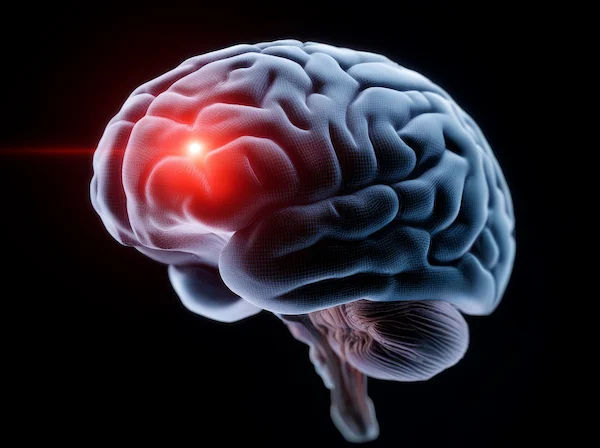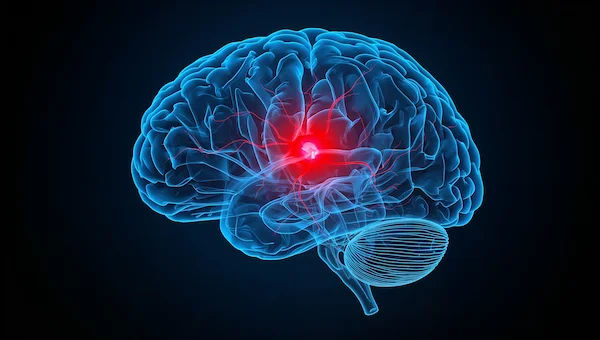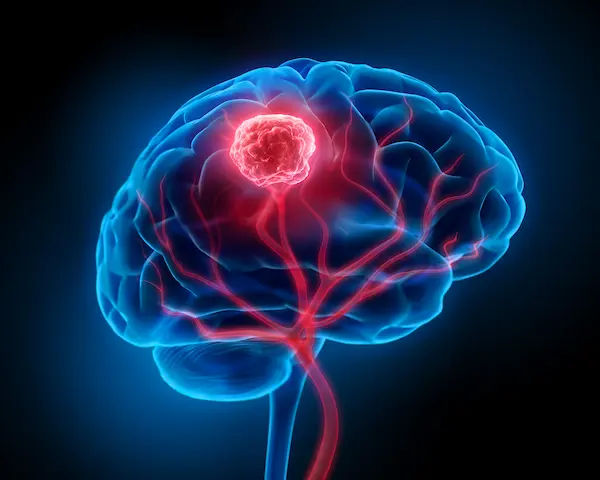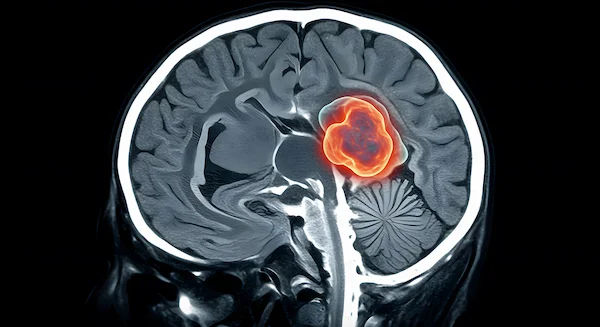Decoding Brain Tumours: A Comprehensive Guide to Symptoms, Treatment, and Hope
Know about brain tumours, what it is, malignant, benign, types of tumour, symptoms, causes, diagnosis, treatment options and living with brain tumour


Introduction
A diagnosis of a brain tumour can feel overwhelming, shrouded in complex medical terms and uncertainty. But knowledge is power. This guide aims to decode the complexities of brain tumours, breaking down everything from the earliest warning signs to the latest advanced treatment options. Understanding what a brain tumour is, how it’s diagnosed, and the potential paths for a cure or management can empower patients and their families to have informed discussions with their healthcare team. We will walk through the different types of tumours, demystify the diagnostic process, and explore the multidisciplinary approach to treatment that offers hope and improved outcomes for many.
What is a Brain Tumour? The Basics Explained
Simply put, a brain tumour is an uncontrolled growth of abnormal cells within the brain. These cells cluster together, forming a mass that can interfere with normal brain functions like muscle control, sensation, memory, and other cognitive processes. It's crucial to understand that not all brain tumours are created equal. The term encompasses a wide range of conditions with vastly different behaviours and outcomes. The first step in decoding a brain tumour is understanding its fundamental characteristics.
Consult a Top Oncologist for Personalised Advice
Benign vs. Malignant: Understanding the Crucial Difference
This distinction is one of the most important in oncology.
Benign Brain Tumours: These tumours are slow-growing, have distinct borders, and do not contain cancer cells. They do not invade surrounding brain tissue. However, "benign" does not always mean "harmless." Because the skull is a rigid box, even a non-cancerous tumour can cause serious problems by pressing on sensitive areas of the brain, leading to symptoms and requiring treatment. Meningiomas are a common example of often benign tumours.
Malignant Brain Tumours: These contain cancer cells. They are typically fast-growing, invade and destroy healthy brain tissue, and are life-threatening. Glioblastoma is the most aggressive type of malignant primary brain tumour.
Primary vs. Metastatic: Where the Tumour Begins
Another key classification is the tumour's origin.
Primary Brain Tumours: These begin in the brain itself. They can be benign or malignant.
Metastatic (Secondary) Brain Tumours: These are more common. They occur when cancer cells from another part of the body (like the lung, breast, or skin) break away and travel to the brain, forming new tumours. The treatment for metastatic brain cancer often focuses on the original cancer.
Recognising the Signs: Common Brain Tumour Symptoms
The symptoms of a brain tumour are incredibly varied and depend on the tumour's size, location, and rate of growth. They can be subtle and easily mistaken for other, less serious conditions.
General Symptoms Caused by Pressure
As a tumour grows, it increases pressure inside the skull (intracranial pressure). This can cause:
New or worsening headaches, often more severe in the morning.
Unexplained nausea or vomiting.
Seizures, especially in someone with no history of them.
Vision problems, such as blurred or double vision.
Gradual loss of sensation or movement in an arm or leg.
Focal Symptoms: When Location Matters
Where the tumour is located directly affects the symptoms. For example:
Frontal Lobe: Changes in personality, judgement, or reasoning; weakness on one side of the body.
Temporal Lobe: Memory problems, difficulty with language (aphasia).
Parietal Lobe: Issues with spatial awareness, reading, or writing.
Cerebellum: Loss of coordination, balance problems.
If you experience persistent or worsening neurological symptoms like these, it is essential to consult a doctor. You can book an online consultation with a neurologist on Apollo24|7 for an initial evaluation.
The Diagnostic Journey: How Brain Tumours are Detected
Diagnosing a brain tumour is a multi-step process designed to confirm the presence of a mass, determine its location, and, most importantly, identify its type.
Neurological Exams: The First Step
A doctor will check your vision, hearing, balance, coordination, strength, and reflexes. Problems in one or more areas can provide clues about the part of your brain that may be affected.
Imaging Techniques: MRI and CT Scans
Magnetic Resonance Imaging (MRI): This is the preferred imaging tool for brain tumours. It provides detailed cross-sectional images of the brain, often using a contrast dye to highlight abnormalities.
Computed Tomography (CT) Scan: This may be used in emergencies to quickly detect bleeding or a large mass.
The Gold Standard: The Role of Biopsy
While imaging suggests a tumour, a biopsy is often needed for a definitive diagnosis. A sample of the tumour tissue is removed (either during surgery or with a needle) and analysed by a pathologist. This analysis determines whether the tumour is benign or malignant, its grade (how aggressive it looks under the microscope), and its specific genetic markers, which are critical for guiding personalised brain tumour treatment.
Decoding the Treatment Landscape: A Multidisciplinary Approach
Treatment is highly individualised, involving a team of specialists including neurosurgeons, neuro-oncologists, and radiation oncologists. The plan depends on the tumour type, size, location, and the patient's overall health.
Brain Tumour Surgery: The Goal of Removal
When possible, surgery is the first-line treatment. The primary goal is to remove as much of the tumour as possible without damaging critical brain tissue. Techniques like awake brain surgery and intraoperative MRI help surgeons maximise removal while minimising neurological damage.
Radiation Therapy: Targeting Cancer Cells Precisely
Radiation uses high-energy beams to kill tumour cells. It's often used after surgery to eliminate remaining cells or for tumours that can't be surgically removed. Advanced techniques like Gamma Knife radiosurgery allow for extremely precise targeting, minimising damage to healthy tissue.
Chemotherapy: Using Drugs to Fight Tumours
Chemotherapy uses powerful drugs, often administered orally or intravenously, to kill cancer cells. For brain tumours, a wafer impregnated with chemotherapy drugs can sometimes be placed in the brain during surgery. The effectiveness of chemotherapy varies greatly by tumour type.
Emerging Frontiers: Targeted Therapy and Immunotherapy
These represent the cutting edge of brain tumour cure research.
Targeted Therapy: These drugs target specific abnormalities present within cancer cells. For example, drugs can target the blood vessels that feed tumours (anti-angiogenesis therapy).
Immunotherapy: This treatment harnesses the body's immune system to fight cancer. It's an area of active clinical trials for brain tumours.
Life After Diagnosis: Prognosis and Quality of Life
A brain tumour diagnosis is a life-altering event. While prognosis depends on many factors, the focus is increasingly on maintaining the best possible quality of life.
Factors That Influence Prognosis
These include the tumour type and grade, its genetic markers, the patient's age and overall health, and how much of the tumour could be removed.
The Importance of Rehabilitation and Support
Recovery often continues long after active treatment. Rehabilitation—including physical, occupational, and speech therapy is vital for regaining lost functions. Emotional support through counselling or support groups is equally important for patients and caregivers.
Prevention and Risk Factors: What We Know
For most primary brain tumours, there are no known preventable causes. The only well-established environmental risk factor is exposure to high doses of ionising radiation. A small percentage of tumours are linked to specific genetic syndromes. For metastatic brain cancer, the best prevention is early detection and treatment of the primary cancer.
Conclusion
Decoding a brain tumour involves understanding a complex interplay of biology, diagnostics, and treatment options. While the journey is undeniably challenging, the landscape of care is continually evolving. From precise surgical techniques to innovative targeted therapies, there is more hope than ever before for effectively managing brain tumours and extending life with quality. The key is to seek care from a specialised medical team, stay informed about your specific diagnosis, and leverage the support systems available to you. Remember, you are not alone in this. Advances in research are happening every day, pushing the boundaries of what is possible in the quest for a cure. If you or a loved one is facing this diagnosis, take it one step at a time, armed with knowledge and supported by expert care.
Consult a Top Oncologist for Personalised Advice
Consult a Top Oncologist for Personalised Advice

Dr Devashish Tripathi
Radiation Specialist Oncologist
20 Years • MBBS, PLAB, MRCP (UK)- General Medicine, FRCR (Oncology), Certificate of Completion of Training (CCT)- Clinical Oncology
Delhi
Apollo Hospitals Indraprastha, Delhi

Dr. V R N Vijay Kumar
Surgical Oncologist
9 Years • MBBS, MS (Gen. Surg.), DNB (Surg. Onco.)
Ahmedabad
Apollo Hospitals Gandhinagar, Ahmedabad

Dr. Amit Choraria
Surgical Oncologist
18 Years • MBBS, MS (Surgery) Fellow, Surgical Oncology, Tata Medical Center (FSO) Fellow, European Board of Surgery (Surgical Oncology) (FEBS) Fellow, Minimal Access Surgery (FMAS) Fellow, Indian Association of Gastrointestinal Endosurgeons (FIAGES) UICC Fellow, Royal Marsden NHS, London, UK Visiting Scholar, Plastic Reconstructive Surgery, CGMH, Taiwan Fellow, Robotic Surgical Oncology, Vattikuti Foundation, USA
Kolkata
Apollo Multispeciality Hospitals , Kolkata, Kolkata
(50+ Patients)
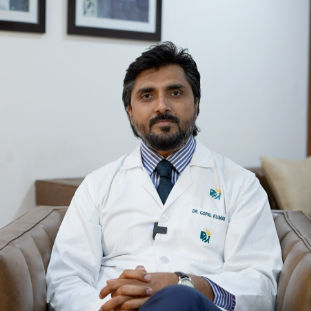
Dr. Gopal Kumar
Head, Neck and Thyroid Cancer Surgeon
15 Years • MBBS, MS , FARHNS ( Seoul, South Korea ), FGOLF ( MSKCC, New York )
Delhi
Apollo Hospitals Indraprastha, Delhi
(25+ Patients)

Dr Sunita Samleti
Oncologist
18 Years • M.D. (Pathology)- TN Medical College, Mumbai University, Mumbai, Mar 2005 M.B.B.S. Grant Medical College, Mumbai University, Mumbai, Oct 1999
Chinagadila
Apollo Hospitals Health City Unit, Chinagadila
More articles from Brain Tumor
Frequently Asked Questions
1. What are the most common early symptoms of a brain tumour?
The most common early signs are often persistent, worsening headaches that are different from past headaches, new-onset seizures, and gradual changes in vision, speech, or personality. However, these symptoms can be caused by many other conditions, so a medical evaluation is essential.
2. Can a benign brain tumour turn into cancer?
It is very rare for a truly benign brain tumour to become malignant (cancerous). However, some low-grade (less aggressive) tumours can recur and, over time, transform into a higher-grade, more aggressive cancer.
3. What is the survival rate for a malignant brain tumour like glioblastoma?
Survival rates are statistical estimates and vary greatly by individual. Glioblastoma (GBM) is an aggressive cancer. With standard treatment involving surgery, radiation, and chemotherapy, the median survival is typically in the range of 12 to 18 months. However, new treatments are continually improving these outcomes for some patients.
4. Is there any effective alternative treatment for brain tumours?
There are no proven alternative therapies that can cure a brain tumour. Treatments like acupuncture or meditation may help manage symptoms and improve quality of life as complementary approaches alongside standard medical care, but they should never replace surgery, radiation, or chemotherapy.
5. What are the long-term side effects of brain tumour treatment?
Long-term effects can include cognitive challenges (sometimes called 'chemo brain'), fatigue, hormonal imbalances if the pituitary gland is affected, and potential neurological deficits depending on the tumour's location and treatment type. Rehabilitation and ongoing medical care are crucial for managing these effects.
